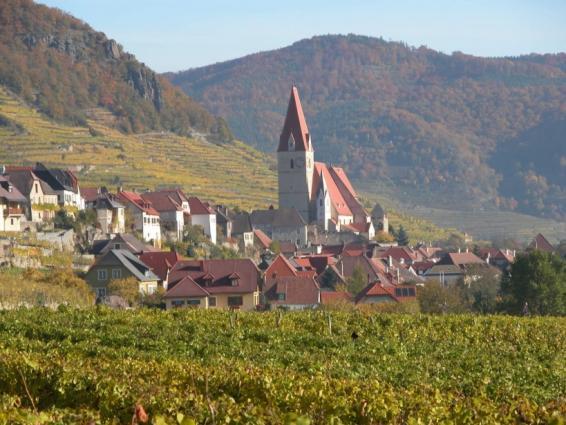Prager
Steinriegl Riesling
Prager
Steinriegl Riesling
When Franz Prager co-founded the Vinea Wachau in 1983, he had already established a reputation as one of Austria’s best winemakers. The marriage of Franz’s daughter, Ilse, to Dr. Toni Bodenstein in the 1990s was the catalyst for sweeping renaissance at the winery. Bodenstein, a biologist, geologist and historian, spent years studying the geology of the region and focused much of his attention on preserving genetic diversity. His “Arche Noah” project, a planting of old Grüner Veltliner and Riesling clones is the result of his work. Bodenstein’s scholarly approach, passion for biodiversity, and brilliant winemaking has elevated Prager to the highest echelon of Austrian wine producers.
Tasting Notes
Austrian Riesling is often defined by high levels of dry extract thanks to a lengthy ripening period and a pleasing freshness due to dramatic temperature swings between day and night. Steinriegl’s uniquely cool microclimate results in wines of elevated aroma and focused acidity, and its limestone soil provides compact structure and a flavor that is distinctive among Wachau Rieslings.
Food Pairing
Riesling’s high acidity makes it one of the most versatile wines at the table. Riesling can be used to cut the fattiness of foods such as pork or sausages and can tame a certain amount of saltiness. Conversely, it can highlight foods such as fish or vegetables in the same way a squeeze of lemon or a vinaigrette might.
When Franz Prager co-founded the Vinea Wachau in 1983, he had already established a reputation as one of Austria’s best winemakers. The marriage of Franz’s daughter, Ilse, to Dr. Toni Bodenstein in the 1990s was the catalyst for sweeping renaissance at the winery. Bodenstein, a biologist, geologist and historian, spent years studying the geology of the region and focused much of his attention on preserving genetic diversity. His “Arche Noah” project, a planting of old Grüner Veltliner and Riesling clones is the result of his work. Bodenstein’s scholarly approach, passion for biodiversity, and brilliant winemaking has elevated Prager to the highest echelon of Austrian wine producers.
Tasting Notes
Austrian Riesling is often defined by high levels of dry extract thanks to a lengthy ripening period and a pleasing freshness due to dramatic temperature swings between day and night. Steinriegl’s uniquely cool microclimate results in wines of elevated aroma and focused acidity, and its limestone soil provides compact structure and a flavor that is distinctive among Wachau Rieslings.
Food Pairing
Riesling’s high acidity makes it one of the most versatile wines at the table. Riesling can be used to cut the fattiness of foods such as pork or sausages and can tame a certain amount of saltiness. Conversely, it can highlight foods such as fish or vegetables in the same way a squeeze of lemon or a vinaigrette might.
Brand Materials
Vineyard & Production Info
Winemaking & Aging
About the Vineyard
Steinriegl is Prager’s only vineyard west of Weißenkirchen and is planted to Riesling. The southwest-facing site is cool due to its proximity to the forest and its soil is a unique “kalksilikatmarmor,” a limestone silicate marble rarely found elsewhere in the Wachau. Bodenstein produces both an earlier picked Federspiel and a later picked Smaragd from this site.
Federspiel is a designation of ripeness for dry wines used exclusively by members of the Vinea Wachau and must fall between 11.5 and 12.5% abv. The grapes are hand-harvested, typically in October, and are sent directly to press where they’re fermented using natural yeasts. Since 1996, Prager wines have been vinified entirely in stainless-steel tanks.







